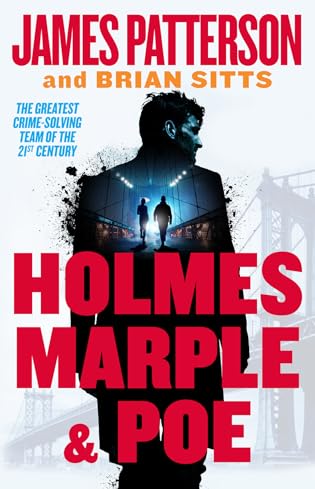 Holmes, Marple & Poe: The Greatest Crime-Solving Team of the Twenty-First Century by James Patterson, Brian Sitts
Holmes, Marple & Poe: The Greatest Crime-Solving Team of the Twenty-First Century by James Patterson, Brian Sitts Format: eARC
Source: supplied by publisher via Edelweiss
Formats available: hardcover, paperback, large print, ebook, audiobook
Genres: mystery, suspense, thriller
Series: Holmes, Margaret & Poe #1
Pages: 352
on January 8, 2024
Purchasing Info: Author's Website, Publisher's Website, Amazon, Barnes & Noble, Kobo, Bookshop.org, Better World Books
Goodreads
Crime! Murder! Who are you going to call?
In New York City, three intriguing, smart, and stylish private investigators open Holmes, Marple & Poe Investigations. Who are these detectives with famous names and mysterious, untraceable pasts?
Brendan Holmes—The Brain: Identifies suspects via deduction and logic.
Margaret Marple—The Eyes: Possesses powers of observation too often underestimated.
Auguste Poe—The Muscle: Chases down every lead no matter how dangerous or dark.
The agency’s daring methodology and headline-making solves attract the attention of NYPD Detective Helene Grey. Her solo investigation into her three unknowable competitors rivals the best mysteries of Sir Arthur Conan-Doyle, Agatha Christie, and Edgar Allan Poe.
My Review:
Names to conjure with, aren’t they? Which is very much the point, when Brendan Holmes, Margaret Marple and Auguste Poe open their private investigation business in a formerly rundown bakery that no one else was willing to buy.
The bakery was, once upon a time in 1954, the scene of a grisly murder. A cold case that is right up Margaret Marple’s alley – whoever she might REALLY be.
It’s also the first link in a nearly endless chain of cases that doesn’t look like it’s even started yet – and doesn’t seem to have any end in sight.
As much as THIS Holmes, Marple and Poe resemble their originators – in both Holmes’ and Poe’s cases to their detriment – we know it’s mostly an act. Or a reconstruction. Or possibly three experienced operators taking on identities so blatantly false but so meticulously created that no one can find the seams where they were stitched together.
The NYPD certainly tries, and they seem to be far from alone in their attempts.
But whoever, and whatever, these fascinating detectives were once upon a time, in the here and now they’re the best chance that the city has of closing the toughest of cases, from a fake kidnapping to an impossible art theft to a real – and really old – body dump site under the subway. And everything in between and all the way up to the mayor’s office.
Along with the murder of a young, forgotten girl on the floor of a bakery.
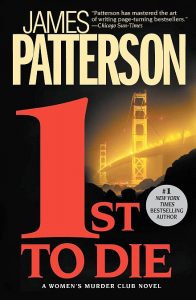 Escape Rating A: To say I had misgivings going into this one would be an understatement. James Patterson is a publishing juggernaut, so at one point I felt sort of obligated to try one of his books just to see what all the fuss was about – because there certainly is lots of fuss. The book was 1st to Die, the first book in his Women’s Murder Club series, and I could not get into it and had not been tempted back.
Escape Rating A: To say I had misgivings going into this one would be an understatement. James Patterson is a publishing juggernaut, so at one point I felt sort of obligated to try one of his books just to see what all the fuss was about – because there certainly is lots of fuss. The book was 1st to Die, the first book in his Women’s Murder Club series, and I could not get into it and had not been tempted back.
Until now. Because I can’t resist a Sherlock Holmes pastiche, no matter how tangential, and got grabbed by the title of this book and couldn’t talk myself out of it.
I’m very glad that I didn’t, because Holmes, Marple & Poe is a terrifically fun read, whether you are there for the hints of the mystery giants they named themselves for, or are just there to help figure out whodunnit.
What made this so much fun was that it exists on two tracks. On the one hand, there’s the mystery wrapped around the identities of the people hiding behind those famous names. We don’t even get hints, merely a few unsubstantiated rumors, but we do get the fun of watching several investigations chase their own tails trying to figure it out.
(Also the fun of figuring out how those names are meant to reinforce the resemblance. C. Auguste Dupin was the detective in what is arguably the first detective story, “The Murders in the Rue Morgue”, written by Edgar Allan Poe. Margaret Rutherford was one of the earliest and most famous actresses to play the oft-portrayed Miss Jane Marple on the silver screen. I’m still puzzling about who Brendan was in relation to either Sherlock Holmes or Sir Arthur Conan Doyle but I just know I’m going to facepalm when I figure it out.)
On the other, and much more prominent hand in this story, we get to watch three investigators who are all mostly and more or less at the top of their respective games follow the trails of several bizarre crimes to a grand conclusion that ties all the cases up, not each in their own neat bow, but in one gigantic neat bow – with a couple of smaller bows hanging off the side.
The way that one clue led to another – even in cases that did not seem like they had anything to contribute to the whole of the thing – gave me vibes of one of my favorite mystery series, J.D. Robb’s In Death series. I even see the nucleus of the ‘Scooby Gang’ forming, including a demon cat and a gigantic hound named (of course) Baskerville.
In other words, the particular string of cases they follow is riveting, and I enjoyed the vibe of the ‘gang’ coming together so much that I would love to see more of it all. If Holmes, Marple & Poe turned out to be the first book in a series I’d be utterly thrilled and absolutely there for it.

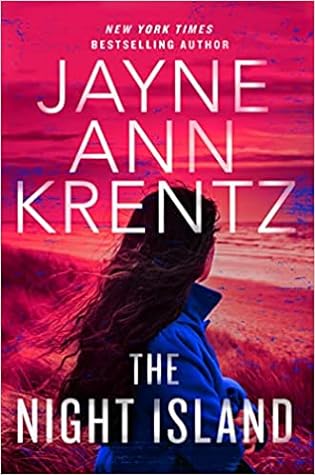 The Night Island (The Lost Night Files, #2) by
The Night Island (The Lost Night Files, #2) by 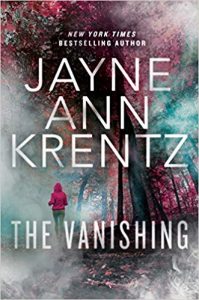 All of
All of 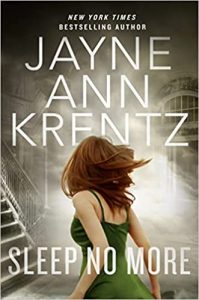 Escape Rating A-: The thing about the ‘Jayneverse’ is that everything connects up – EVENTUALLY. Howsomever, that doesn’t stop a reader from jumping in pretty much anywhere and getting sucked right in.
Escape Rating A-: The thing about the ‘Jayneverse’ is that everything connects up – EVENTUALLY. Howsomever, that doesn’t stop a reader from jumping in pretty much anywhere and getting sucked right in. 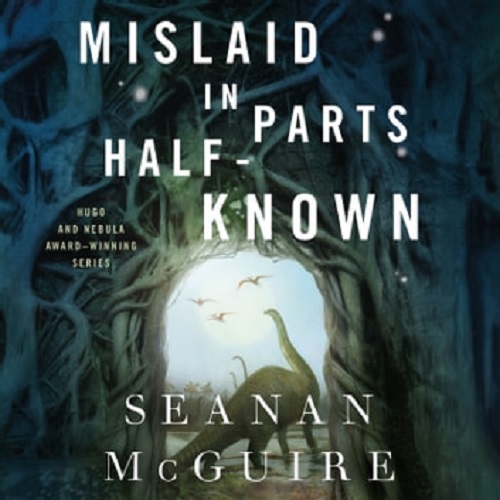 Mislaid in Parts Half-Known (Wayward Children, #9) by
Mislaid in Parts Half-Known (Wayward Children, #9) by 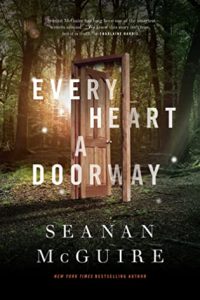 Beginning with
Beginning with 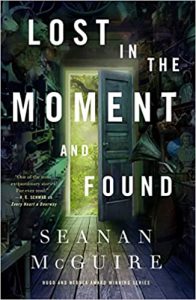 At first, the story feels very much a part of the YA genre which the series is often pigeonholed into, as out-of-place, out-of-time Antsy is being persecuted by a powerful clique of ‘mean girls’. It’s only when she starts revealing herself for who she really is and what she really can do that we start to see her as considerably more capable and mature than either her nine-year-old head or her sixteen-year-old body would be capable of.
At first, the story feels very much a part of the YA genre which the series is often pigeonholed into, as out-of-place, out-of-time Antsy is being persecuted by a powerful clique of ‘mean girls’. It’s only when she starts revealing herself for who she really is and what she really can do that we start to see her as considerably more capable and mature than either her nine-year-old head or her sixteen-year-old body would be capable of.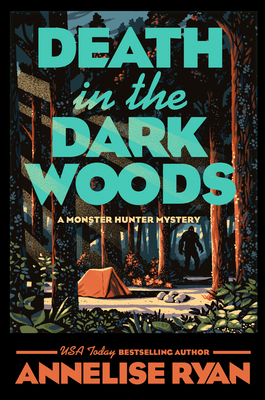 Death in the Dark Woods (Monster Hunter Mystery #2) by
Death in the Dark Woods (Monster Hunter Mystery #2) by 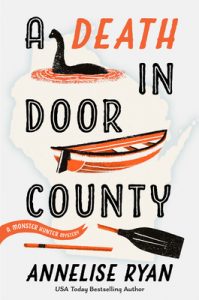 Escape Rating A-: So far, at least, the
Escape Rating A-: So far, at least, the 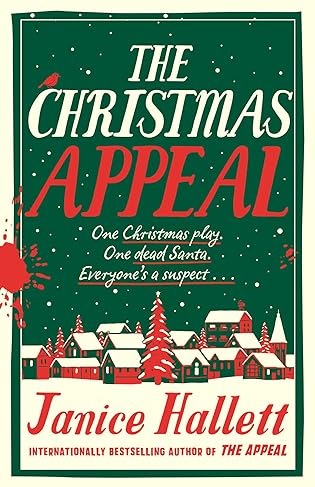 The Christmas Appeal (The Appeal, #1.5) by
The Christmas Appeal (The Appeal, #1.5) by 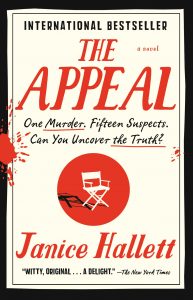 Escape Rating A-: I have to admit that my first question when I saw this book was whether it was a good idea to go back to the scene and the style of
Escape Rating A-: I have to admit that my first question when I saw this book was whether it was a good idea to go back to the scene and the style of 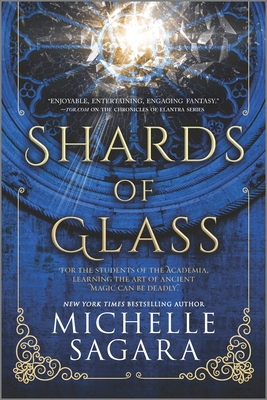 Shards of Glass by
Shards of Glass by 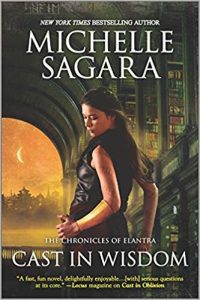 Shards of Glass is a bit of a side story in the marvelously interwoven, intricately-plotted, and long-running
Shards of Glass is a bit of a side story in the marvelously interwoven, intricately-plotted, and long-running 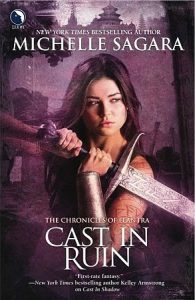 Escape Rating A+: I began reading the
Escape Rating A+: I began reading the 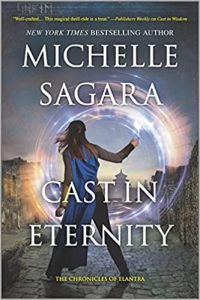 And of course they all turn out to be wrong – and wrong in a way that is buried in the legends of the deep past and will cause catastrophic destruction if they’re not sussed out in time and by the right people.
And of course they all turn out to be wrong – and wrong in a way that is buried in the legends of the deep past and will cause catastrophic destruction if they’re not sussed out in time and by the right people.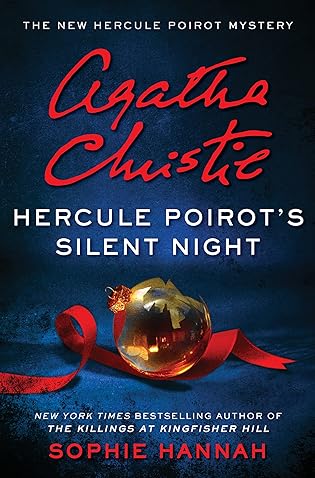 Hercule Poirot's Silent Night (New Hercule Poirot Mysteries, #5) by
Hercule Poirot's Silent Night (New Hercule Poirot Mysteries, #5) by  Scotland Yard Inspector Edward Catchpool and his friend and mentor Hercule Poirot are just settling in to a two-week staycation (even if that term had not been invented yet) in London, staying in Poirot’s rather palatial apartment at Whitehaven Mansions, attended by Poirot’s inestimable butler, George, for the duration of the holidays.
Scotland Yard Inspector Edward Catchpool and his friend and mentor Hercule Poirot are just settling in to a two-week staycation (even if that term had not been invented yet) in London, staying in Poirot’s rather palatial apartment at Whitehaven Mansions, attended by Poirot’s inestimable butler, George, for the duration of the holidays.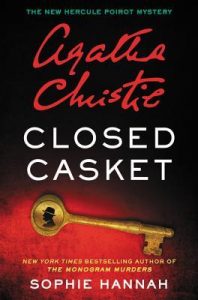 Escape Rating B-: Looking back at my reviews of the previous books in this
Escape Rating B-: Looking back at my reviews of the previous books in this 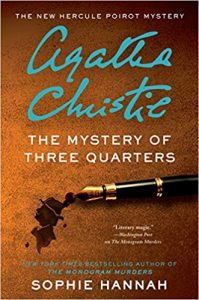 A lot of the ‘action’ of the story, particularly the ‘fair play’ aspects of the mystery and its resolution, were handled as more ‘telling’ than showing, as the two detectives were often working separately, and only caught up at irregular intervals through meticulous reports – which is how the reader gets caught up as well.
A lot of the ‘action’ of the story, particularly the ‘fair play’ aspects of the mystery and its resolution, were handled as more ‘telling’ than showing, as the two detectives were often working separately, and only caught up at irregular intervals through meticulous reports – which is how the reader gets caught up as well.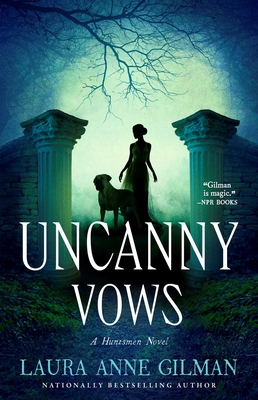 Uncanny Vows (Huntsmen, #2) by
Uncanny Vows (Huntsmen, #2) by 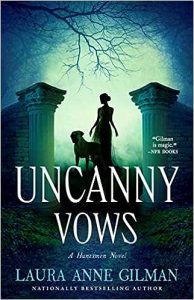 If the idea that the Harker family is somehow involved with the things that go bump in the night feels familiar but you can’t quite remember why, it’s because it IS familiar. Jonathan Harker got himself mixed up with a famous vampire in a little place called Transylvania a mere couple of decades before we first met Aaron and Rosemary Harker in the first book in the
If the idea that the Harker family is somehow involved with the things that go bump in the night feels familiar but you can’t quite remember why, it’s because it IS familiar. Jonathan Harker got himself mixed up with a famous vampire in a little place called Transylvania a mere couple of decades before we first met Aaron and Rosemary Harker in the first book in the 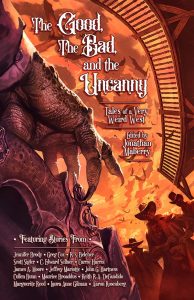 Escape Rating B+: So far, at least, the
Escape Rating B+: So far, at least, the  At the same time, the heavy lifting of setting up the world and the series has already been done in that first book, so this one is able to sink its teeth into the case from the very first page – and that they drive off in Aaron’s rented ‘automotive” gets things going that much faster, while Rosemary’s dislike of the speed, the dust, and Aaron’s relative inexperience driving the thing adds a bit of lightness to what is otherwise a rather dark story of obsession and possession.
At the same time, the heavy lifting of setting up the world and the series has already been done in that first book, so this one is able to sink its teeth into the case from the very first page – and that they drive off in Aaron’s rented ‘automotive” gets things going that much faster, while Rosemary’s dislike of the speed, the dust, and Aaron’s relative inexperience driving the thing adds a bit of lightness to what is otherwise a rather dark story of obsession and possession.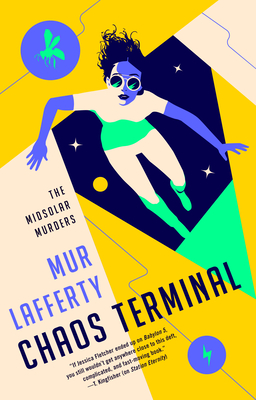 Chaos Terminal (The Midsolar Murders, #2) by
Chaos Terminal (The Midsolar Murders, #2) by 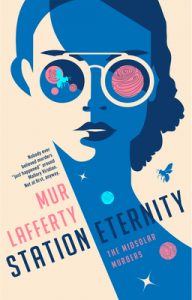 Escape Rating B: One of the things that made the first book in this series,
Escape Rating B: One of the things that made the first book in this series, 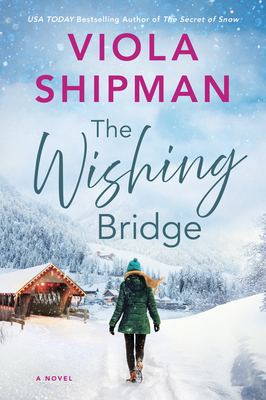 The Wishing Bridge by
The Wishing Bridge by 